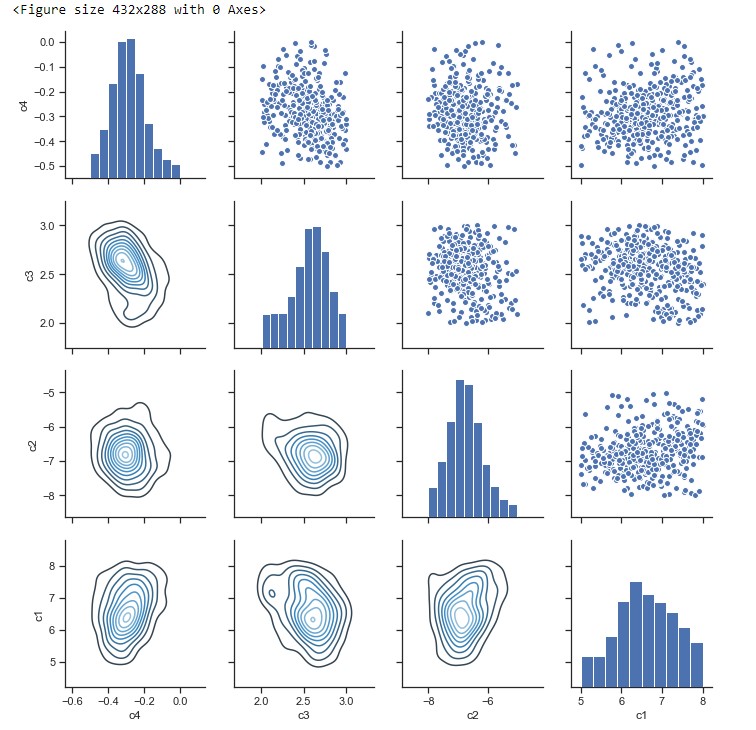
(1/9)
I’m so glad to announce that the computational model I developed during my PhD is now a stand-alone software and has recently passed the strict review process of my favorite journal, Journal of #OpenSource Software 🤩
doi.org/10.21105/joss.…
Let me explain it a bit 👇
I’m so glad to announce that the computational model I developed during my PhD is now a stand-alone software and has recently passed the strict review process of my favorite journal, Journal of #OpenSource Software 🤩
doi.org/10.21105/joss.…
Let me explain it a bit 👇
(2/9)
BioDeg is an #opensource cross-platform software written in #FreeFEM, C++, and Python for modeling the degradation of metallic #biomaterials and simulating the #biodegradation behavior of medical devices and #implants in #corrosion experiments.
BioDeg is an #opensource cross-platform software written in #FreeFEM, C++, and Python for modeling the degradation of metallic #biomaterials and simulating the #biodegradation behavior of medical devices and #implants in #corrosion experiments.

(3/9)
The necessity and the details of the computational model of #biodegradable materials, which does the main simulation behind the scene, are already discussed in this Twitter thread, so make sure to have a look at it if you like to know more 🤓
The necessity and the details of the computational model of #biodegradable materials, which does the main simulation behind the scene, are already discussed in this Twitter thread, so make sure to have a look at it if you like to know more 🤓
https://twitter.com/MojBarz/status/1415280350511644678?s=20&t=66s1FFvp9EBnHPhNrbS5gA
(4/9)
Simulations in BioDeg can become complex and resource-demanding, so we used #HPC techniques to scale the computation to hundreds or thousands of CPU cores. This was done using the great toolkit #PETSc. More details are here 👇
Simulations in BioDeg can become complex and resource-demanding, so we used #HPC techniques to scale the computation to hundreds or thousands of CPU cores. This was done using the great toolkit #PETSc. More details are here 👇
https://twitter.com/MojBarz/status/1448283941413195784?s=20&t=3GWhIXhD8o7adh2exDVrYg
(5/9)
BioDeg was originally developed to be used from #commandline, but then we added a #crossplatform easy-to-use #GUI to it, developed in #Qt, that can run on #Linux, #Windows, and #MacOS. The GUI allows the user to set up a simulation and monitor its progress 😎
BioDeg was originally developed to be used from #commandline, but then we added a #crossplatform easy-to-use #GUI to it, developed in #Qt, that can run on #Linux, #Windows, and #MacOS. The GUI allows the user to set up a simulation and monitor its progress 😎

(6/9)
BioDeg features a general #preprocessor as well, which facilitates producing appropriate mesh files for biodegradation simulations by embedding desired 3D shapes inside a container (acting as the medium/electrolyte) and adapting the mesh 🙃
BioDeg features a general #preprocessor as well, which facilitates producing appropriate mesh files for biodegradation simulations by embedding desired 3D shapes inside a container (acting as the medium/electrolyte) and adapting the mesh 🙃

(7/9)
Are you interested in trying it out? Then grab your own copy and see it in action. The source code as well as the pre-built binaries for Windows and Linux are available on #GitHub. We highly welcome your suggestions/comments/bug reports 😉
github.com/mbarzegary/Bio…
Are you interested in trying it out? Then grab your own copy and see it in action. The source code as well as the pre-built binaries for Windows and Linux are available on #GitHub. We highly welcome your suggestions/comments/bug reports 😉
github.com/mbarzegary/Bio…
(8/9)
I should thank the editors and reviewers of @JOSS_TheOJ for their constructive comments. You can check out the open-review process of my submission here 👇
github.com/openjournals/j…
The review process of JOSS can make any software more standard, so HIGHLY RECOMMENDED 👍😇
I should thank the editors and reviewers of @JOSS_TheOJ for their constructive comments. You can check out the open-review process of my submission here 👇
github.com/openjournals/j…
The review process of JOSS can make any software more standard, so HIGHLY RECOMMENDED 👍😇
(9/9)
Last but definitely not least, I appreciate the great support I received from my supervisor. Thank you so much @LiesbetGeris 🥰for providing me with the opportunity to target my favorite journal by converting my model into an #opensource software.
Last but definitely not least, I appreciate the great support I received from my supervisor. Thank you so much @LiesbetGeris 🥰for providing me with the opportunity to target my favorite journal by converting my model into an #opensource software.
@threadreaderapp unroll
• • •
Missing some Tweet in this thread? You can try to
force a refresh









